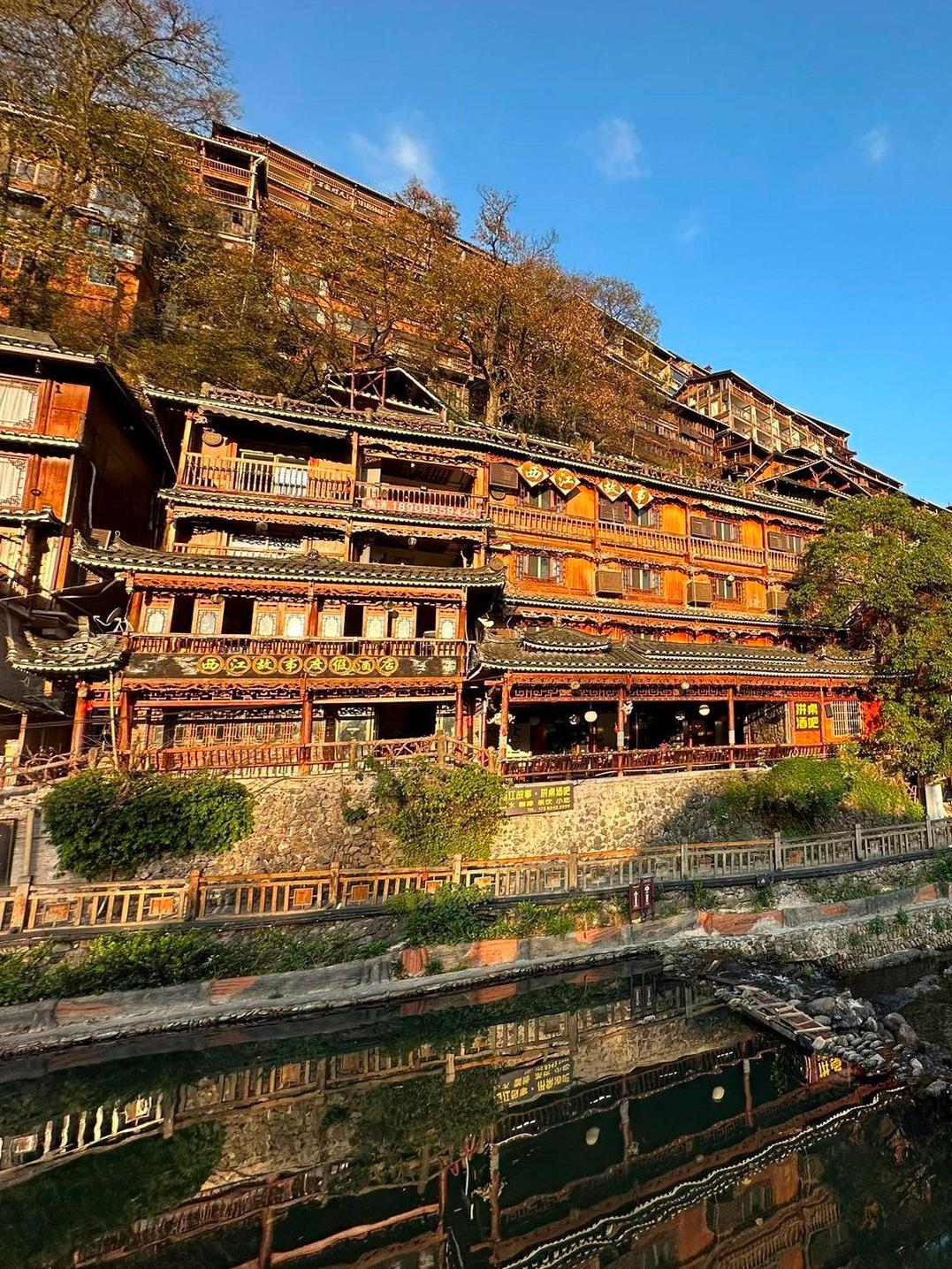The ancient village is the largest Miao village in China
Thien Ho Miao Village is also known by many other names such as Tay Giang Thien Ho Miao Village or Thousand-family Miao Village, located in Leichang County, Qiandongnan Autonomous Region of Guizhou Province, China.
Miao Zhai Ancient Village has a total of more than 1,300 ancient houses located close together and is home to 6,000 ethnic people. In particular, visitors coming here can be overwhelmed by the ancient architecture, as if lost behind the scenes of a Chinese historical film.
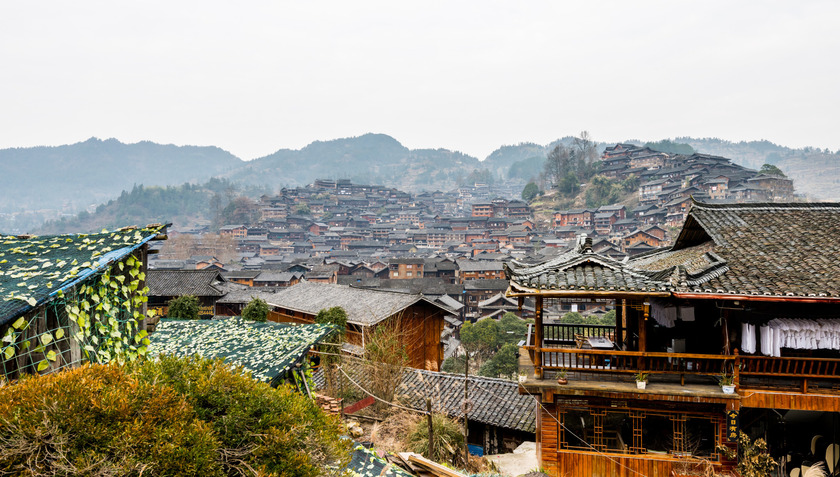
With more than 1,300 ancient houses, this ancient village is built close together on a gentle hillside.
The name Thien Ho Miao Village in Chinese means “village of thousands of Miao households”. This village has a history of more than 1,700 years, with a population of up to 6,000 people, of which 99% are indigenous people. This is also the largest Miao village in the world.
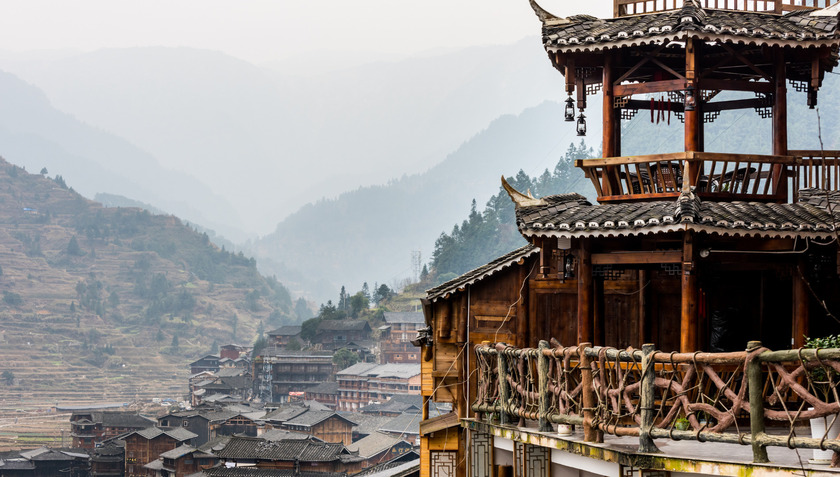
A unique destination that offers a vivid picture of Chinese folk life and culture
More than 40 years ago, Miao Zhai was a poor village. In 1982, as China gradually opened up its economy and prioritized growth, the village was designated by the provincial government to be developed as a tourist destination because of its spectacular scenery. Today, the village is a top destination for visitors looking to escape the hustle and bustle of life.
Ancient houses close together
Perhaps the most impressive thing for visitors when coming to this ancient village is the image of ancient houses close together creating an ancient scene like in the movies. According to research, all the architecture here is consistent with each other in color and construction materials. And it is small, the new homeowners also have to spray paint to create an old look similar to the surrounding ancient houses.

Thien Ho Mieu Trai is also known by many other names such as Tay Giang Thien Ho Mieu Trai
Xijiang Miao Village, with its dark grey yin-yang tiled roofs, creates a unique picture in the mountains of Guizhou, China. This creates a similarity with Sa Pa in Vietnam, with cool weather in summer and even snowfall in winter.

This village has a history of more than 1700 years.
The wooden stilt houses on the riverbank, with their dark gray roofs, make the Meo village as splendid as a watercolor painting. When night falls, this space is lit up by sparkling lights, and everywhere echoes the songs of the local boys and girls. They wear traditional costumes and dance ethnic dances, bringing a joyful and exciting atmosphere to visitors.
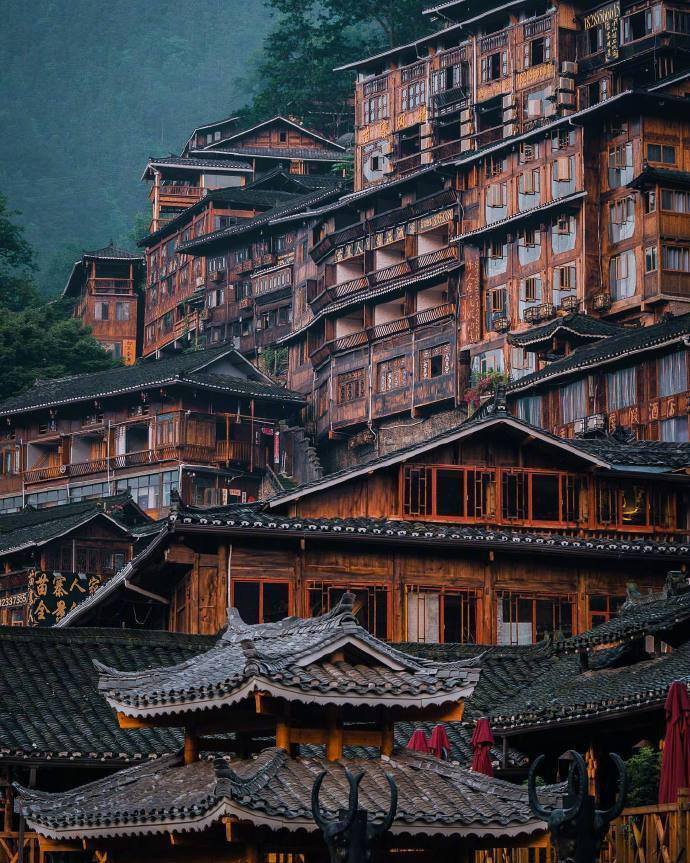
Xijiang Miao Village, with its dark gray yin-yang tiled roofs, creates a unique picture in the mountains of Guizhou, China.
The night in Tay Giang is really special and warm, when everyone has fun together and shares humanity. The immersion in the space and culture of the local makes the travel experience here unforgettable.
Some people will be impressed by the mossy old houses, some like the sophisticated sculptures on the earthen walls, and some are interested in the stone stairs that have faded over time. In particular, the Miao people are extremely friendly and hospitable. They treat tourists from afar as if they were family, with all their sincerity and simplicity.
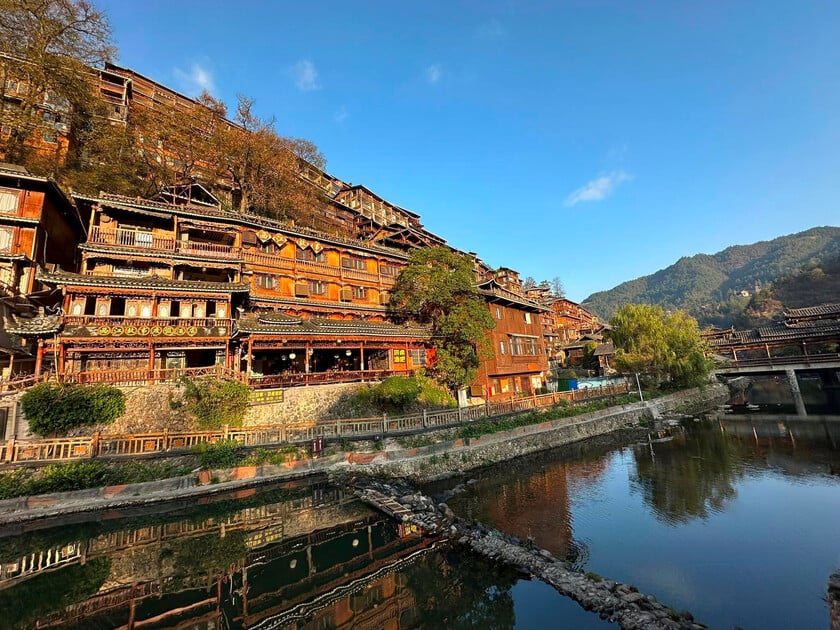
Miao houses usually have three floors.
Miao houses usually have three floors. The first floor is used for storing tools and raising livestock. The second floor is the living room, bedroom, kitchen and space for resting and embroidery, while the top floor is used as a warehouse to store grain and household items. Nowadays, most of the houses have been converted into business locations and guest houses. Many ancient houses are more than 1,700 years old.
LITTLE SEVEN - ANCIENT AND POETIC IN THE MIDST OF THE FOREST
Li Ba (Small Seven Caves) is a combination of water, mountains, forests, caves, lakes... located in limestone terrain. Only when coming here can one fully understand the beauty of the lake with emerald green, blue, deep blue... almost all the green colors of nature. There is a saying that if you want to see water, go to Jiuzhaigou, if you want to see mountains, go to Zhangjiajie, if you want to see both water and mountains, then come to Li Ba.

Le Ba (Small Seven Caves) is a combination of water, mountains, forests, caves, lakes... located in limestone terrain.
This town belongs to the Yunnan-Guizhou Plateau, Liba, with a beautiful autumn climate, year-round clear blue water, fresh and cool nature. Here, the forest covers, creating a green color of vitality. And is the settlement of many ethnic minorities, mainly the Miao, Dao, Thuy and Bouyi people.

Xiao Qi Kong - A unique fairyland in Guizhou
In Le Ba, favorable terrain creates a beautiful scene of emerald green lakes, poetic waterfalls, and peaceful streams.
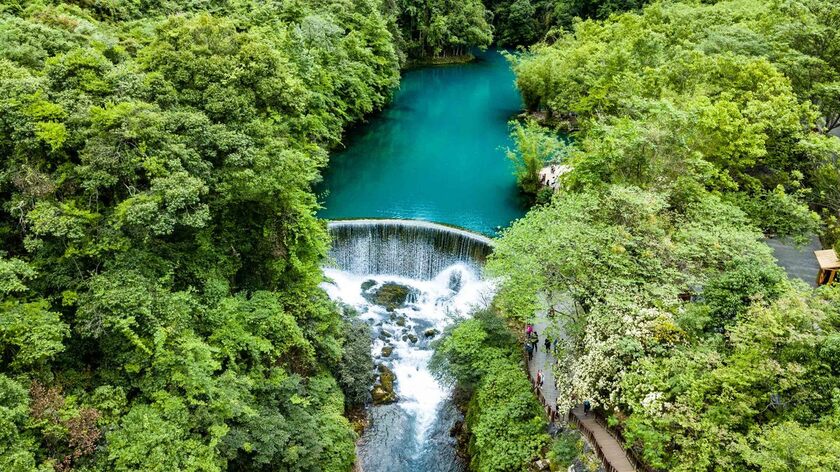
TIEU THAT KHONG - the most beautiful natural ecological forest in Guizhou, China
Le Ba town is home to ethnic minorities including the Miao, Thuy and Bou Y people. Deep inside the town are two famous bridges, That Khong Kieu and Tieu That Khong Kieu. These are ancient bridges built during the Qing Dynasty, 170 years ago. The reason their names have the word That is because each bridge has 7 unique arches.
Phong Vu Kieu - A Masterpiece of Chinese Architecture
Phong Vu Bridge (also known as Trinh Duong Bridge) is one of the most famous bridges in Tam Giang, Lieu Chau. The bridge is about 200m long and 5m wide. The name "Phong Vu" means praying for favorable weather.
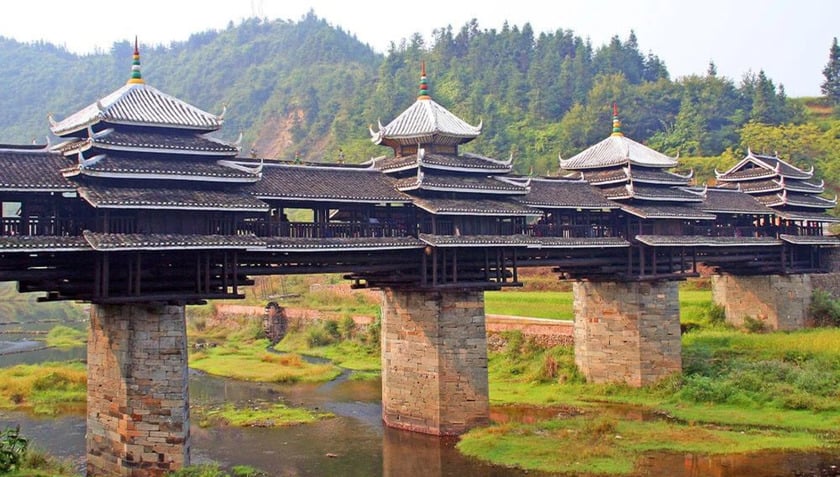
Wind and Rain Bridge (Phong Vu Bridge) - Chengyang Bridge of the Dong people
The bridge was built over the Liujiang River, with four ancient towers at the ends of the bridge, made of wood, stone and ceramic tiles. If you come to Liuzhou, you should not miss the opportunity to admire the ancient beauty of Fengwuqiao Bridge, especially at night, when the bridge is illuminated by colorful lanterns.
Previously, this bridge was built of wood, but later it was rebuilt of wood concrete with unique architecture. This bridge is located in the middle of the ancient space of Mieu village, creating a charming and poetic landscape.
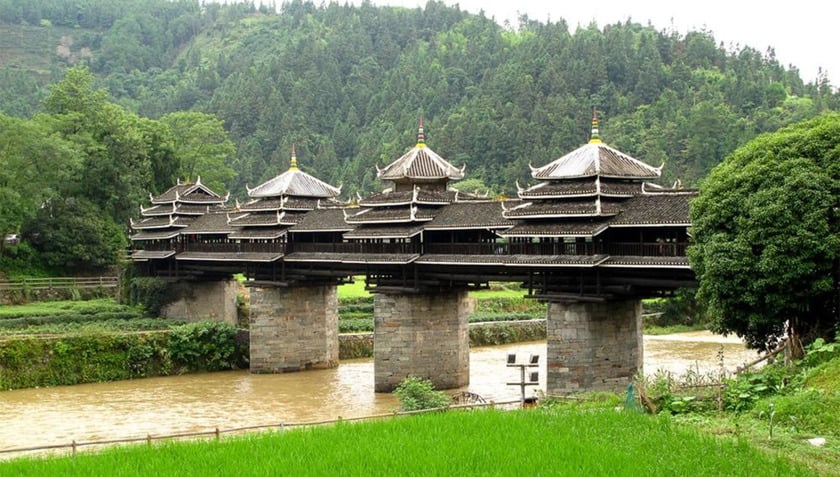
The name "Phong Vu" means praying for favorable weather and wind.
In addition to its feng shui purpose and helping villagers move more easily, this wind and rain bridge is also a favorite virtual check-in location for many tourists. Around the village, there are also some beautifully designed wooden trees for tourists to stop and admire the scenery.
Standing out with its unique architectural space that is thousands of years old, along with the rich cultural identity of the Miao people. Thien Ho Miao Trai is truly an attractive destination, for you to fully enjoy the ancient beauty, quiet and poetic.





